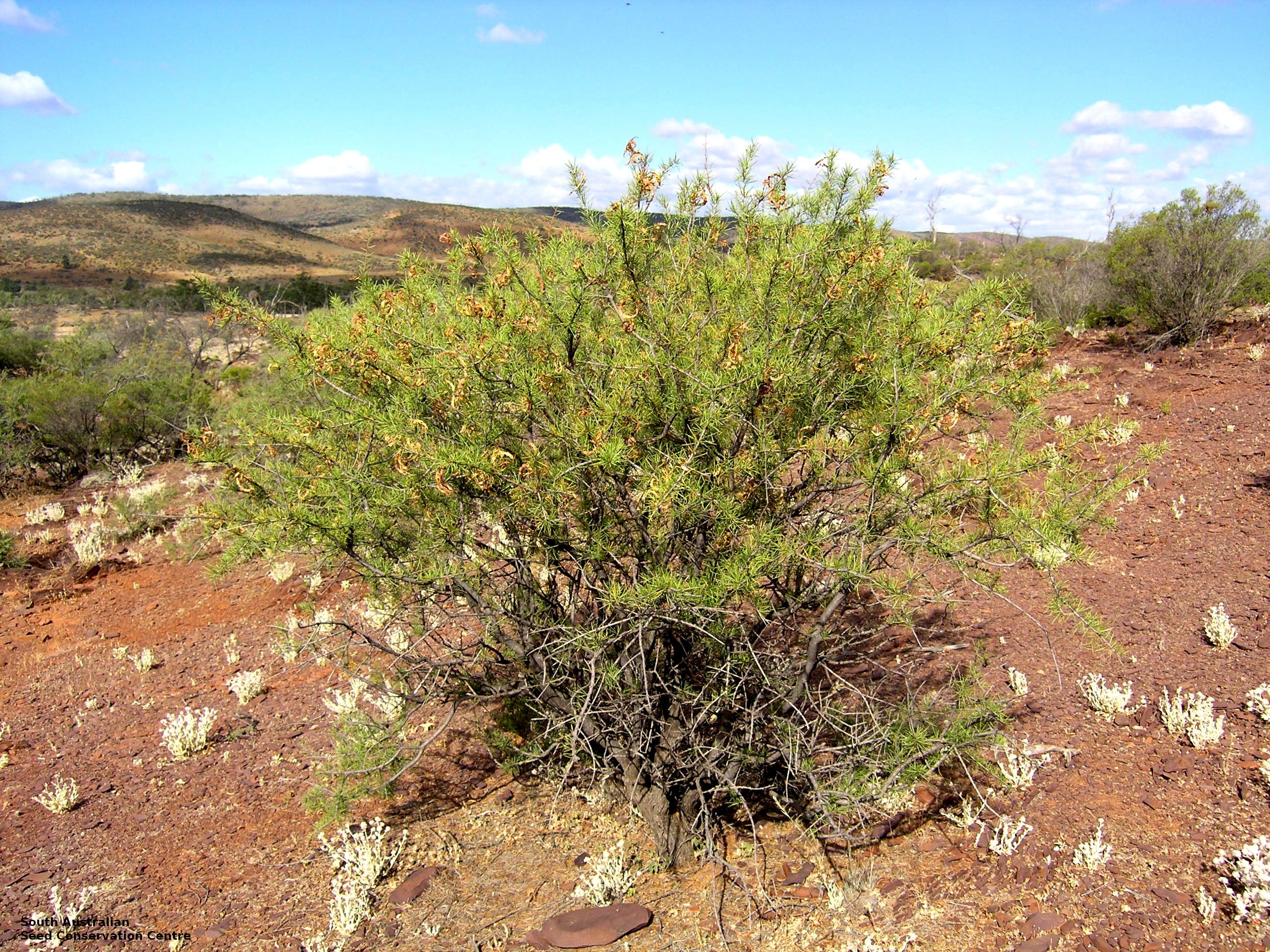
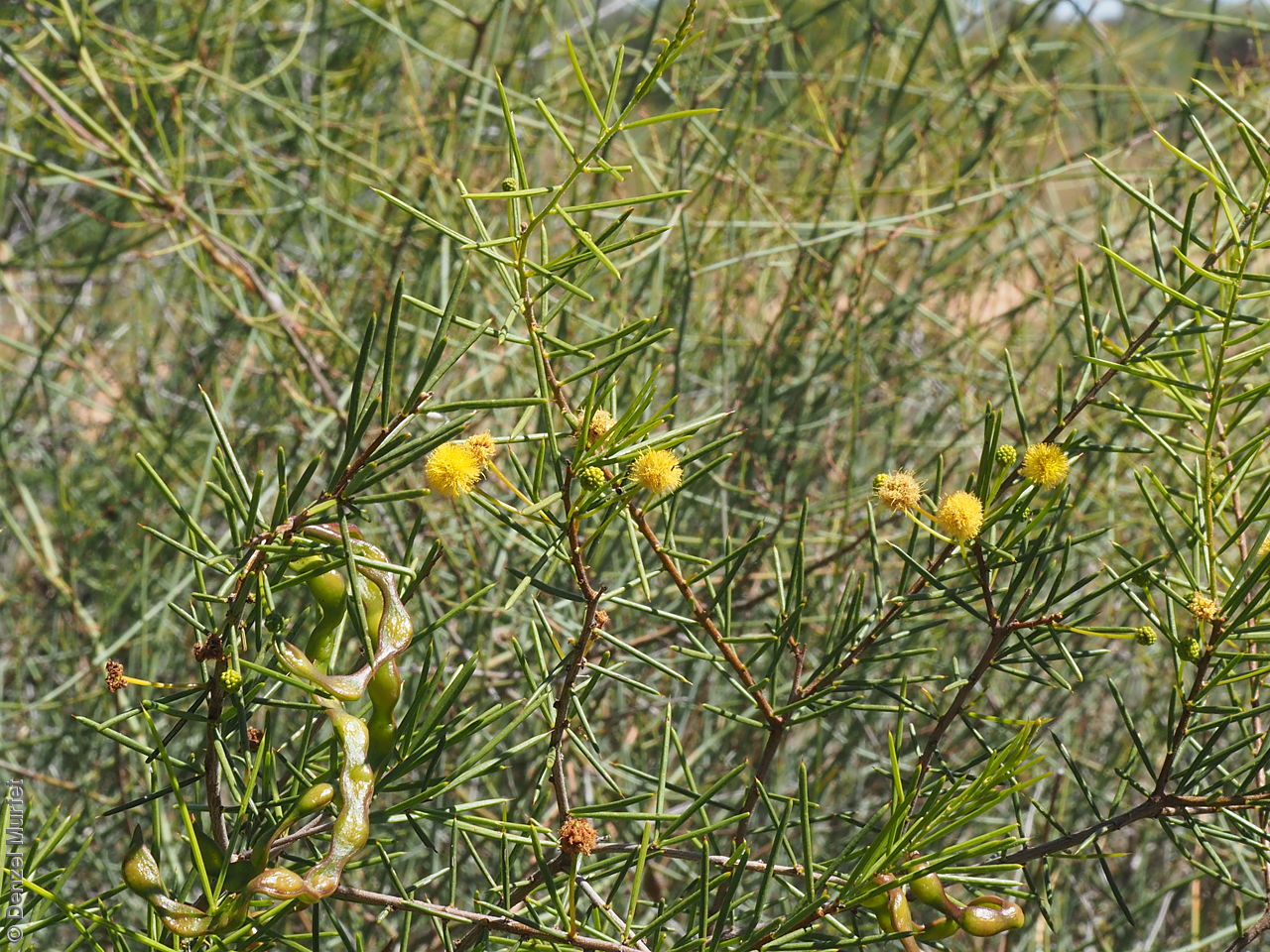
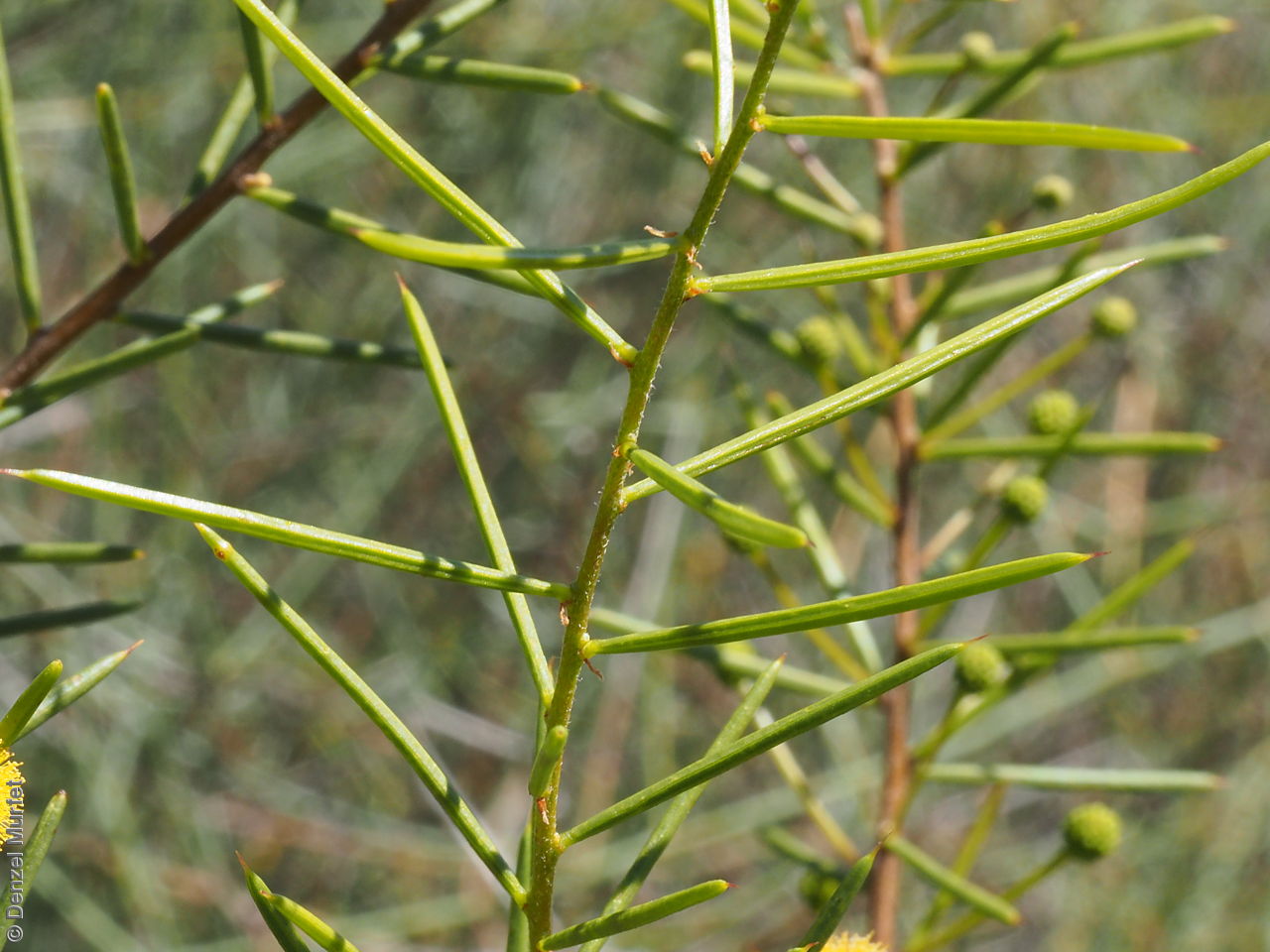
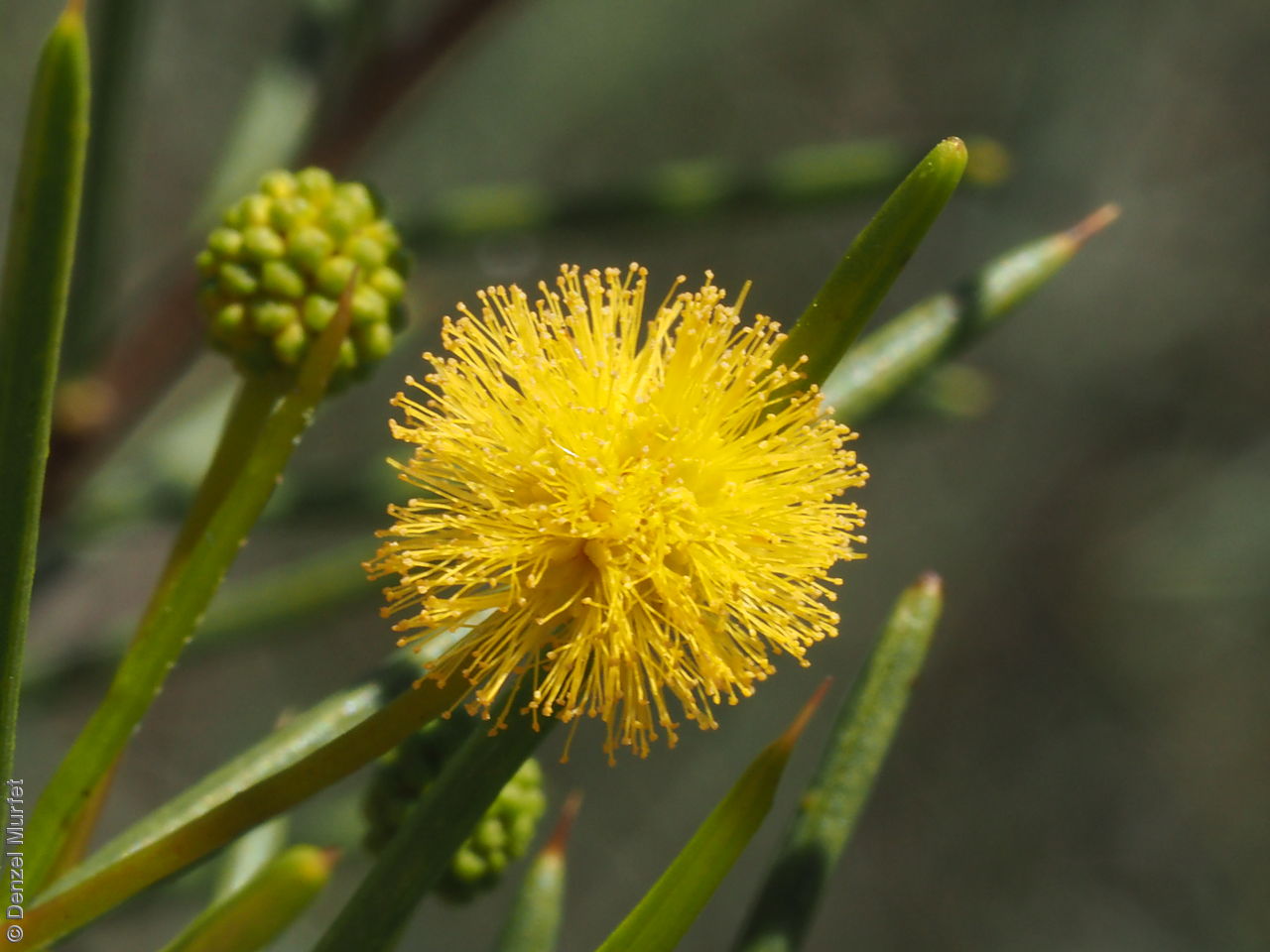
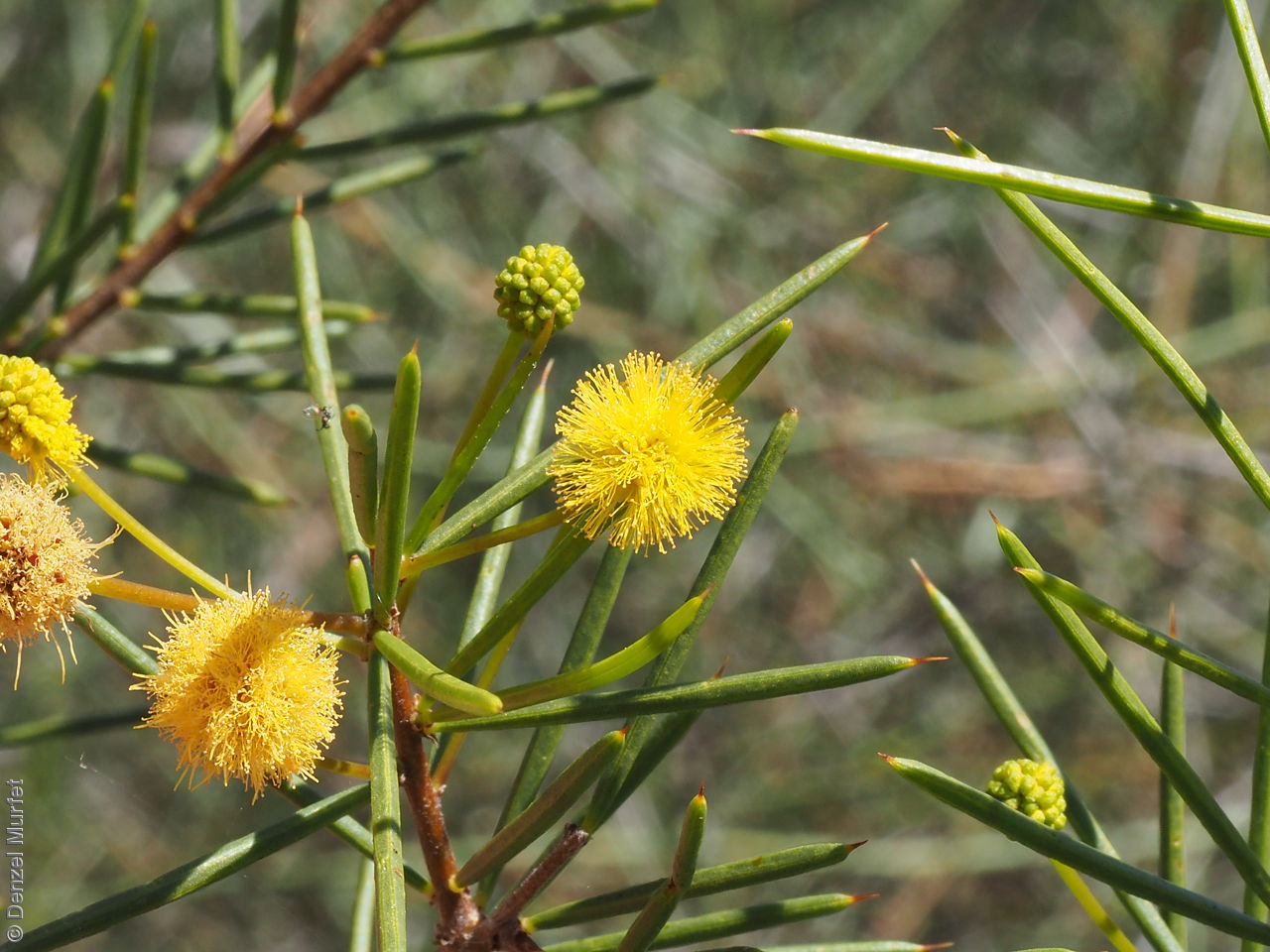
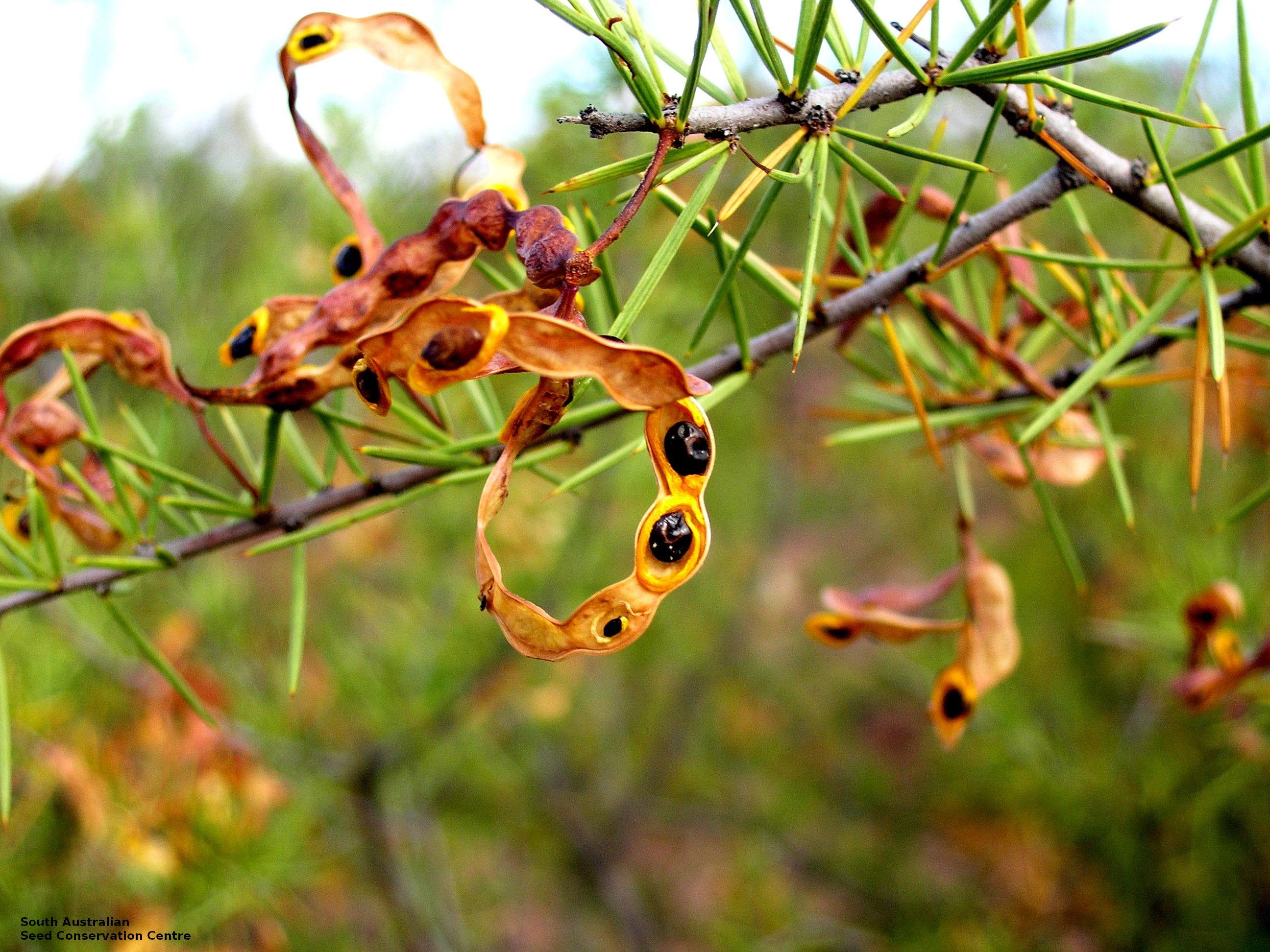
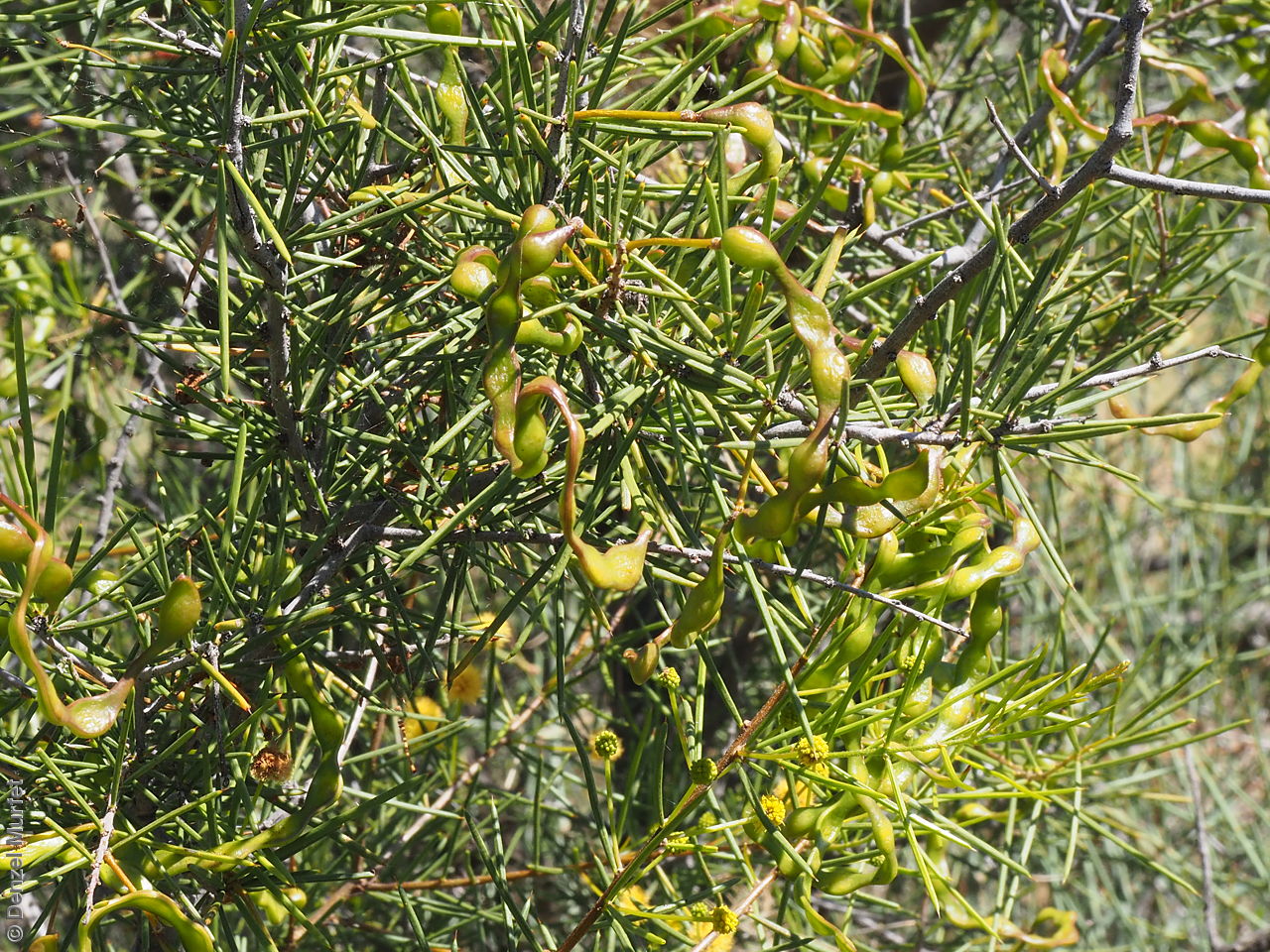
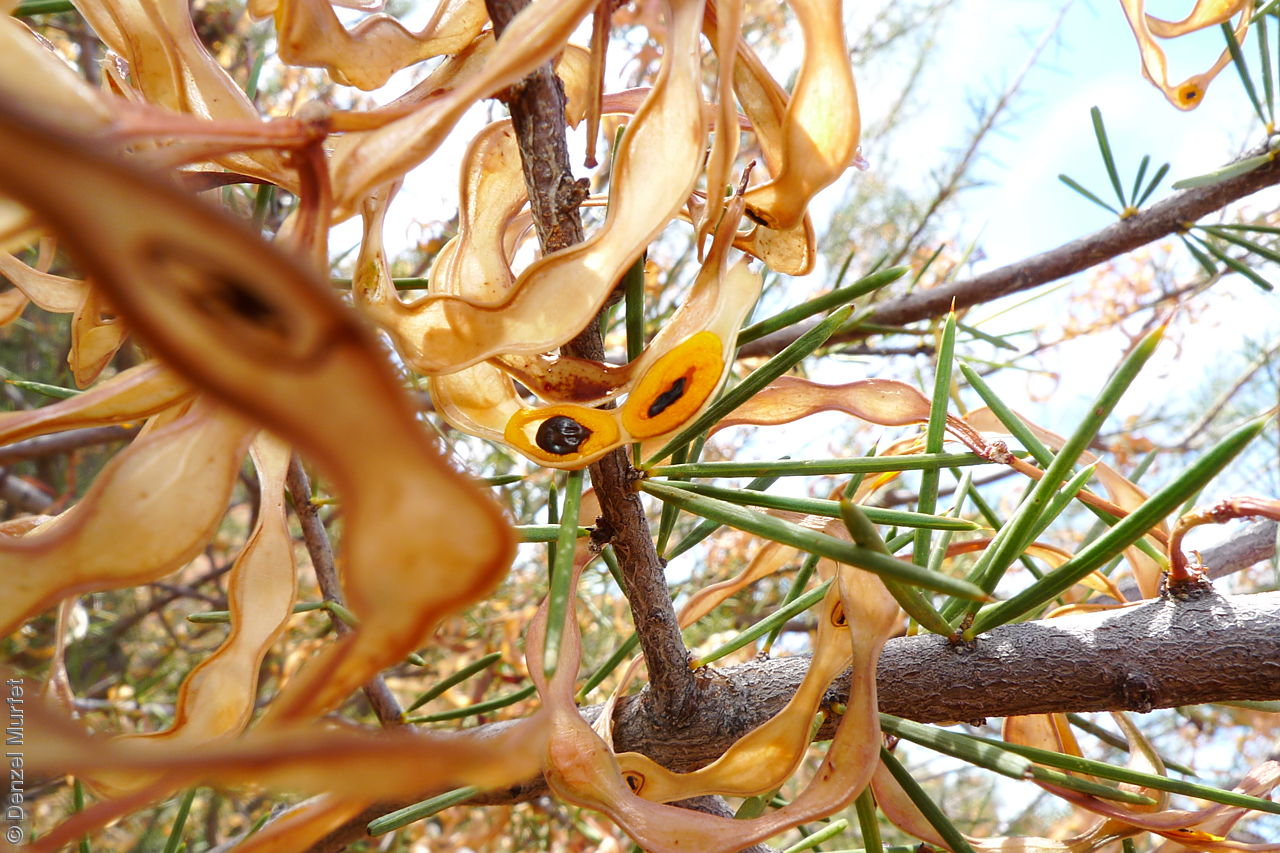
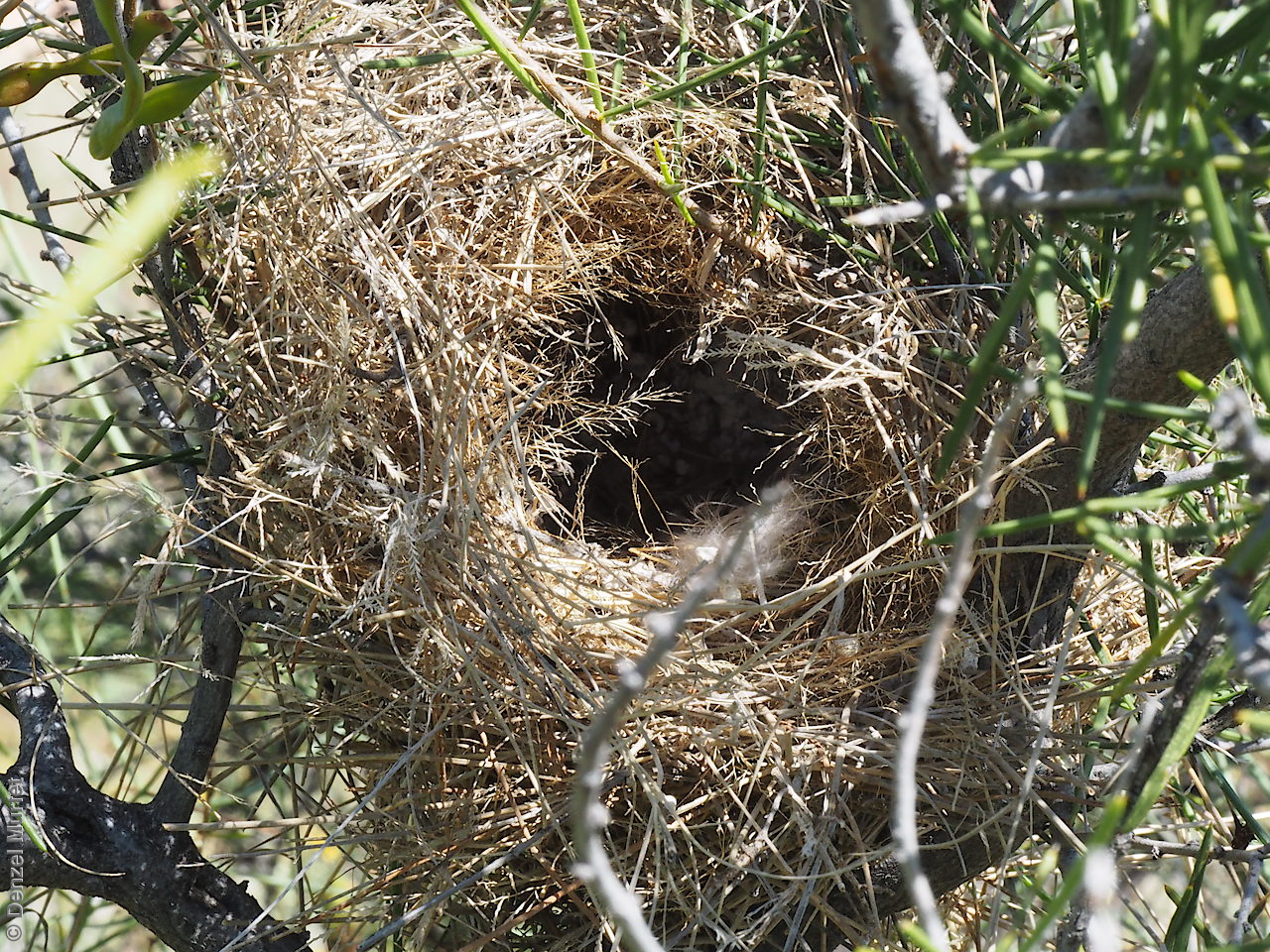
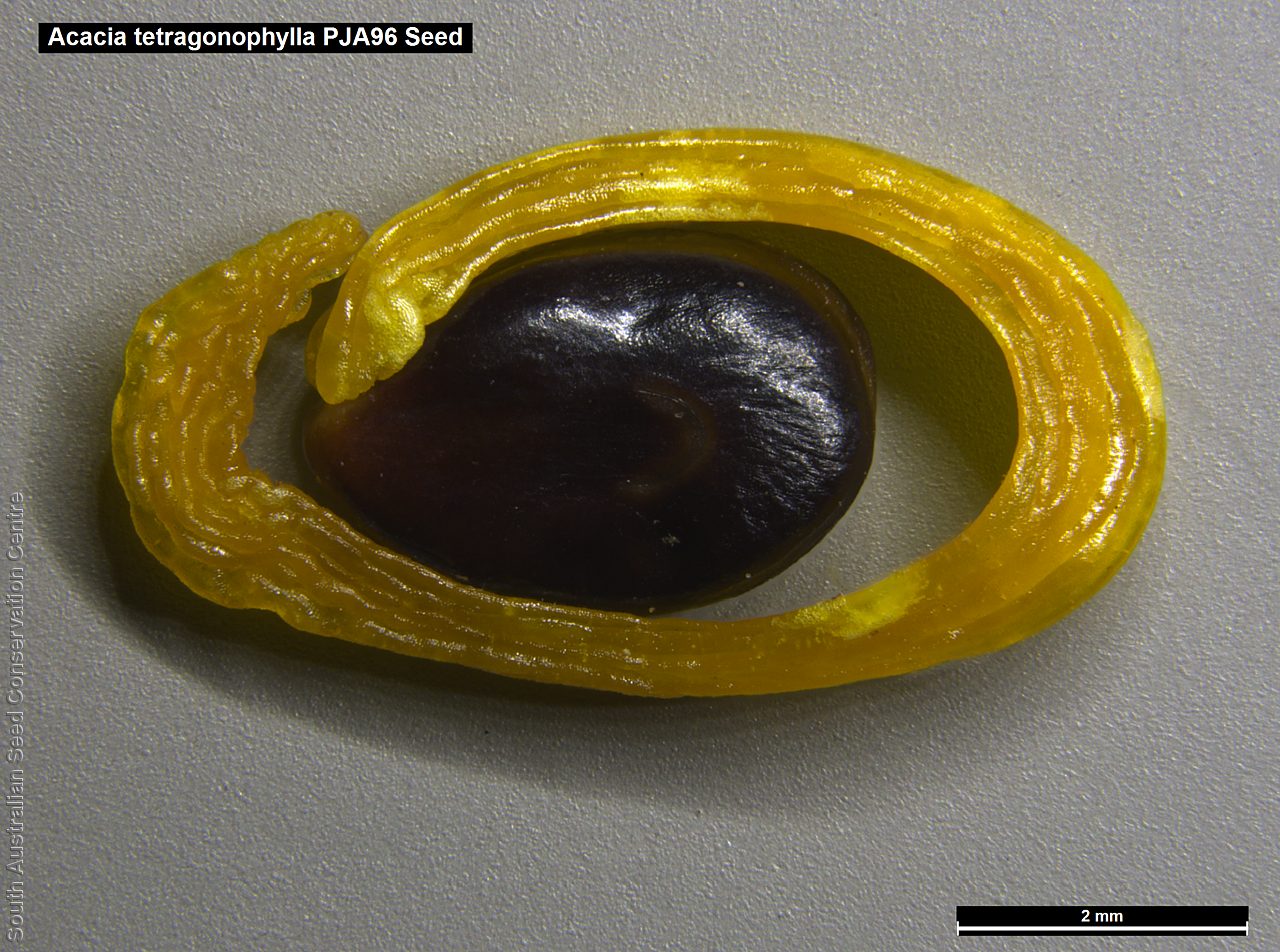
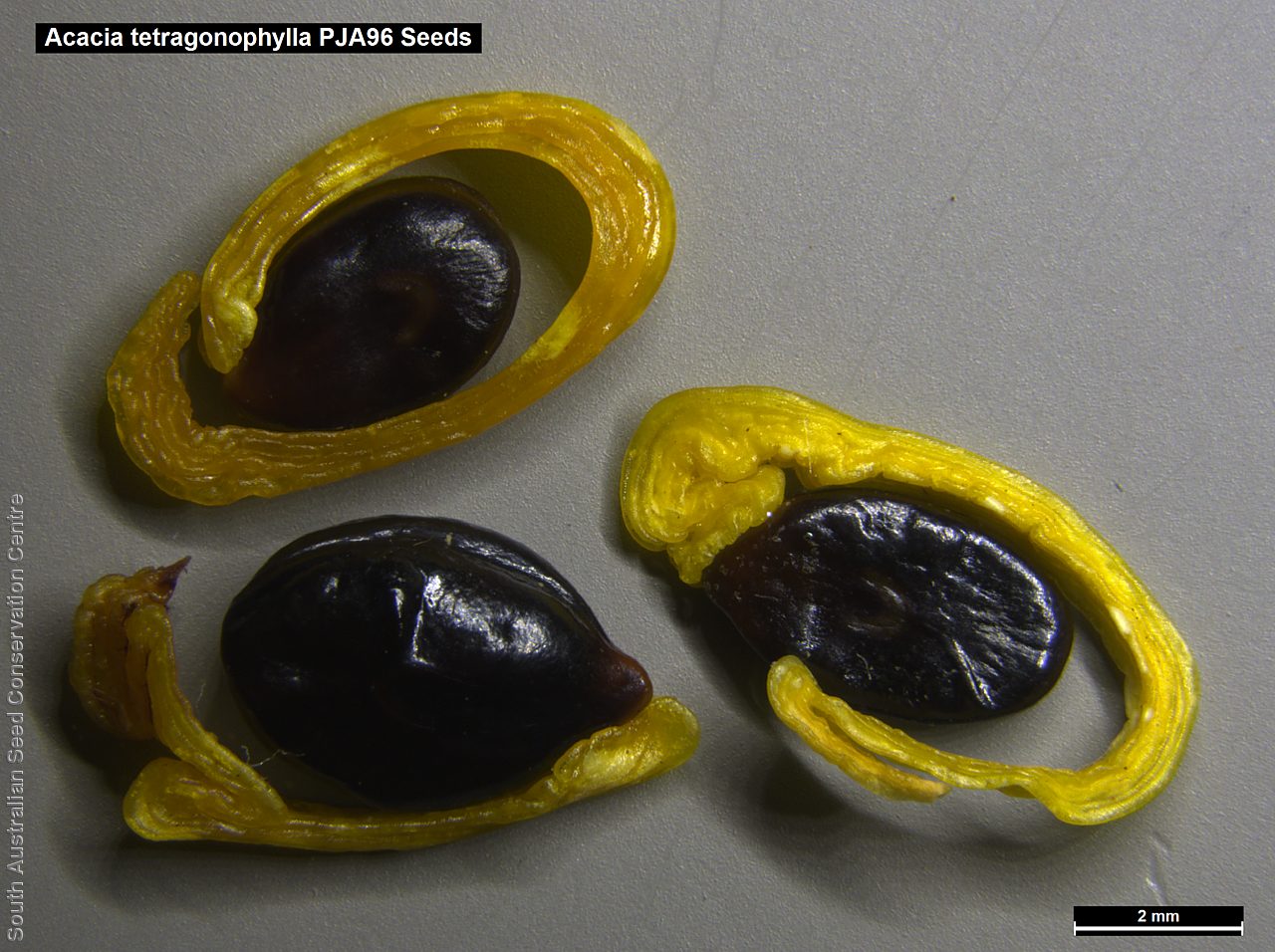
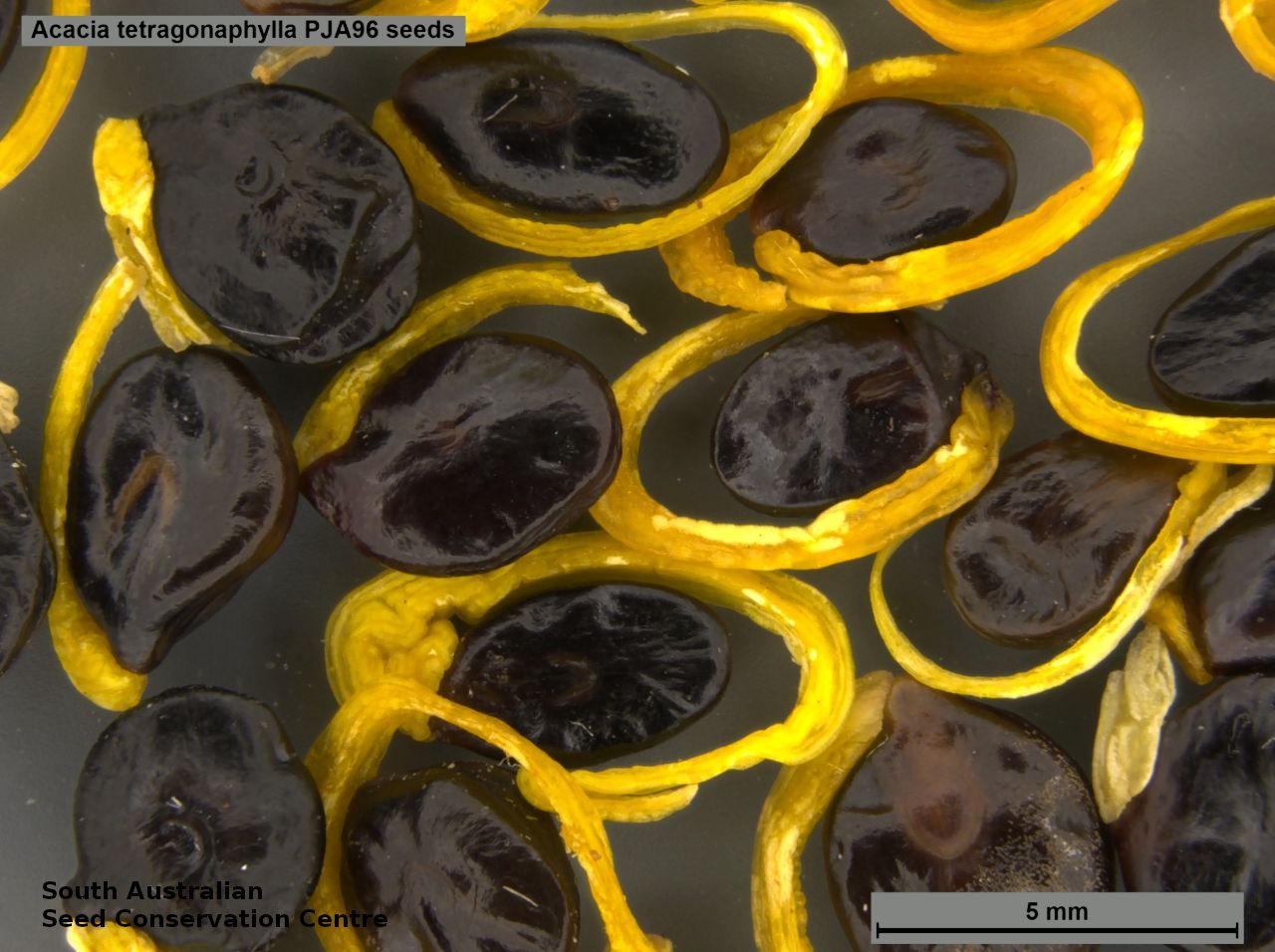

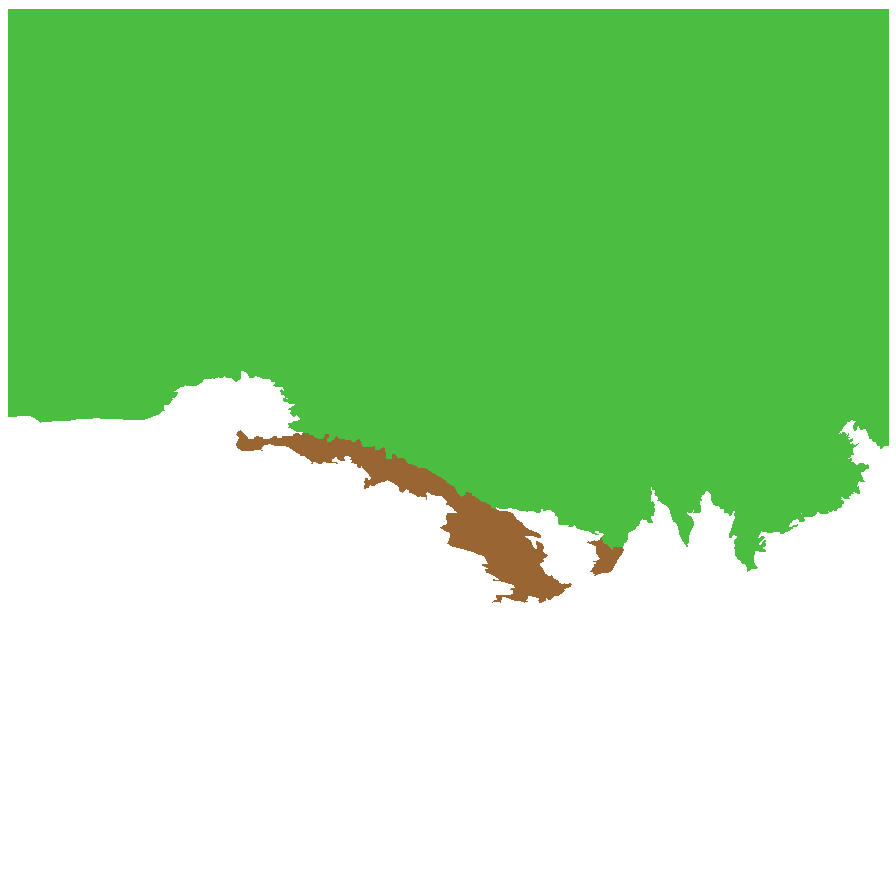
Botanical art
Prior names
Acacia genistioides, orth.var.
Racosperma tetragonophyllum
Acacia genistoides
Common names
Dead-finish
Dead Finish
Kur#ara
Etymology
Acacia from the Greek 'akakia' and derived from 'ake' or 'akis' meaning a sharp point or thorn and 'akazo' meaning to sharpen. Dioscorides, the Greek physician and botanist used the word in the 1st century AD for the Egyptian thorn tree, Acacia arabica. Tetragonophylla from the Greek 'tetra' meaning four, 'gona' meaning an angle and 'phyllon' meaning leaf, referring to the species' clustered phyllodes.
Distribution and status
Found scattered across the arid areas of South Australia from the North-Western and Nullarbor regions eastwards through the Lake Eyre, Gairdner-Torrens, Eyre Peninsula (northern part), Flinders Ranges and Eastern regions to Broken Hill. Also found in Western Australia. Queensland, Northern Territory and New South Wales. Native. Common in South Australia. Common in the other States.
Herbarium regions: North Western, Lake Eyre, Nullarbor, Gairdner-Torrens, Flinders Ranges, Eastern, Eyre Peninsula
NRM regions: Alinytjara Wilurara, Eyre Peninsula, South Australian Arid Lands
AVH map: SA distribution map (external link)
Plant description
Tall, diffuse, straggly, prickly shrubs, or small trees to 5 m high. A short single trunk branching just above ground level, or multi-stemmed with somewhat pubescent branches when young, becoming glabrous with age. Dark grey, slightly fissured and rough bark at the base with smooth on upper branches. Leaves to 5 cm long and 1 mm wide; linear, angular-subulate ending in a pungent point; rigid, clustered usually n groups of 2-5, or solitary on new shoots. Glabrous or with a few scattered hairs when young, dull green with 1-2 prominent veins on each face. Inflorescences simple and axillary, solitary or appearing as clusters of 2-5 with globular yellow flower-heads. Flowering between June and October. Fruits are dark brown, much curved or twisted pod to 8 cm long and 6 mm wide, with thickened, yellowish margins. Seeds are hard, dark brown to black ellipsoid seed to 5 mm long and 3mm wide, with bright yellow aril. Seed embryo type is investing.
Seed collection and propagation
Collect seeds between November and December. Collect mature pods that are turning brown, with hard, dark seeds inside. Be careful when collecting pods, as plants are very prickly. Place the pods in a tray and leave to dry for 1-2 weeks or until the pods begin to split. Then rub the dried pods to dislodge the seeds. Use a sieve to separate any unwanted material. Store the seeds with a desiccant such as dried silica beads or dry rice, in an air tight container in a cool and dry place. From one collection, the seed viability was high, at 90%. This species has physical dormancy that needs to be overcome for the seed to germinate (e.g. nicking or softening the seed coat).
| Location | No. of seeds (weight grams) | Number of plants | Date collected | Collection number Collection location | Date stored | % Viability | Storage temperature |
|---|---|---|---|---|---|---|---|
| BGA MSB | 1,400 (22.5 g) 1,400 (22.5 g) | 100 | 7-Dec-2004 | PJA96 Flinders Ranges | 31-Mar-2006 | 90% | -18°C |
Number of plants: This is the number of plants from which the seeds were collected.
Collection location: The Herbarium of South Australia's region name.
% Viability: Percentage of filled healthy seeds determined by a cut test or x-ray.